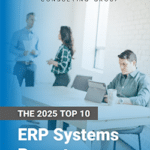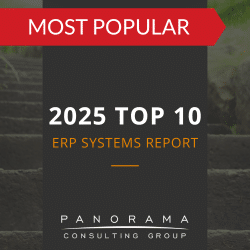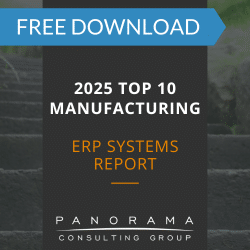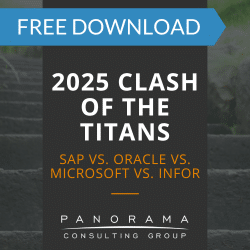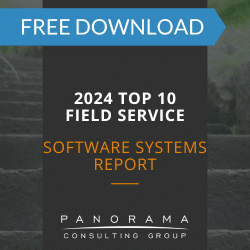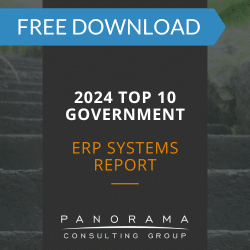- Siloed enterprise systems create critical inefficiencies in workforce planning by separating HR, IT, finance, and operations data.
- Fragmented systems lead to poor forecasting, cross-functional misalignment, and workforce planning failures across industries.
- Integrating HR systems with ERP and supply chain platforms enables real-time decision-making and predictive labor strategies.
- Independent ERP selection and strong HR-IT collaboration are essential for overcoming workforce data silos and enabling strategic workforce planning.
Labor changes, fast digital growth, and ongoing supply chain issues have moved workforce planning from HR to the boardroom.
Unfortunately, most organizations still operate with siloed enterprise systems that create workforce planning inefficiencies. The result is critical staffing decisions based on outdated or incomplete data and a recurring inability to align talent with strategy.
These failures don’t happen in isolation. In manufacturing, they show up as labor shortages that halt production runs. In service industries, they materialize as unstaffed shifts. Across sectors, siloed operations—where HR, IT, finance, and operations operate on disconnected platforms—create blind spots that delay hiring, misalign capacity, and inflate costs.
Today, we’ll discuss workforce planning as a core business capability, and why success relies on unified enterprise data.
Contemplating litigation?
We have multiple software expert witnesses available for provision of reports, depositions, and testimonies.
The Hidden Impact of Siloed Systems on Workforce Planning
When workforce plans are built in isolation—detached from real-time operations, supply chains, or IT infrastructure—inefficiencies compound, often quietly, until your labor strategy no longer matches your business reality.
Here are three ways siloed enterprise systems sabotage effective workforce planning:
1. Fragmented Forecasting
Too often, workforce plans are created using outdated or misaligned assumptions. When HR systems lack integration with your core ERP or supply chain system, talent forecasts are based on static growth models.
Whether you’re overstaffing slow-growth areas or missing the chance to scale up for a spike in orders, you’re operating from lagging data—and your ability to course-correct in real time disappears.
2. Cross-Functional Misalignment
Workforce planning failures are often caused by friction between departments working from different realities.
With siloed enterprise systems departments become territorial over data ownership, system preferences, and decision-making authority. This often leads to power struggles over whose metrics are ‘right,’ which platform gets funding, and who controls access to workforce insights.
For example, finance might model headcount costs in isolation from HR’s talent plans, while IT rolls out tools without input from end users. This leads to contradictory staffing assumptions, duplicate data, and clashing timelines.
3. People-Centric Strategies
Traditional ERP systems—and legacy SCM systems—aren’t wired to account for nuances in human capital. Attributes like engagement, reskilling potential, or leadership readiness rarely show up in enterprise dashboards.
Without systems that surface these dimensions, HR leaders can’t advise on succession planning, cross-functional mobility, or readiness for innovation. Instead, workforce planning stays stuck in compliance mode rather than driving strategic growth.
Transformative Strategies to Unify Workforce Planning
Fixing siloed systems means rethinking how your systems are built and ensuring workforce insights are part of every operational decision.
Here are five strategies to break down silos and elevate your workforce planning:
1. Rebuild HR and IT Collaboration From the Ground Up
When HR is excluded from technology decisions, the entire organization suffers.
Here’s how to make that partnership real:
- Develop a shared technology roadmap – Align on long-term goals and make sure HR has a seat at the table from the beginning.
- Co-create selection criteria for new systems – HR brings context on people, processes, and privacy; IT brings technical feasibility and integration strategy.
- Establish joint governance reviews – Make HR and IT jointly responsible for vendor evaluation, rollout timing, and post-implementation feedback loops. This builds trust and accountability across both teams.
- Treat the relationship as strategic, not transactional – Don’t just solve isolated problems—build shared KPIs that tie system performance to workforce agility, employee experience, or reskilling capacity.
2. Start With Independent ERP Selection
Many workforce planning inefficiencies stem from piecemeal systems that were never designed to work together—often selected in isolation, by different departments, or under pressure from vendor partnerships.
Independent ERP selection consultants can help you prioritize solutions that support workforce integration. That means choosing systems that reflect your actual operating model—whether you’re managing union labor, distributed teams, or complex compliance rules—and ensuring they work together from day one.
3. Create a Live Integration Layer Across Core Functions
Rather than replacing legacy tools wholesale, focus on integrating HR with your existing ERP or supply chain management system through APIs or middleware. The goal is to create a bi-directional flow of data.
For example, when your SCM system detects a shift in production volume, that signal should inform hiring plans or workforce scheduling in real time.
4. Embed Scenario Planning
The future of workforce planning lies in dynamic modeling. We recommend integrating scenario planning tools with your ERP dashboards to simulate staffing needs under various market or operational conditions. This elevates workforce planning from a static report to an active decision-making tool—one that enables executive teams to navigate uncertainty with confidence.
5. Use Strategic Workforce Planning
When you treat workforce planning as predictive—rather than reactive—it becomes a source of competitive advantage.
Here’s how to adopt that mindset:
- Forecast skill shortages before they impact delivery – Use historical trends, attrition patterns, and project pipelines to model where your workforce may fall short in the next 6–18 months.
- Pinpoint leadership gaps early – Identify where your bench is thin—especially in roles tied to future growth, digital transformation, or compliance. Don’t wait until a key leader exits to start succession planning.
- Feed workforce insights into broader planning cycles – Sync your labor forecasts with your supply chain, capital investment models, and product development roadmaps to make smarter bets on timing and capacity.
- Treat workforce signals as leading indicators – Turn employee sentiment, learning velocity, and internal mobility into enterprise signals that shape long-term decisions—not afterthoughts buried in HR reports.
Learn More About Workforce Planning Inefficiencies
Workforce planning suffers when siloed enterprise systems go unaddressed—blocking visibility, delaying decisions, and disconnecting HR from the rest of the business.
In a landscape where talent shortages, automation shifts, and cross-border operations collide, workforce strategy belongs at the heart of your digital transformation agenda. Contact one of our ERP implementation consultants to learn how to develop an integration strategy that supports workforce planning.
